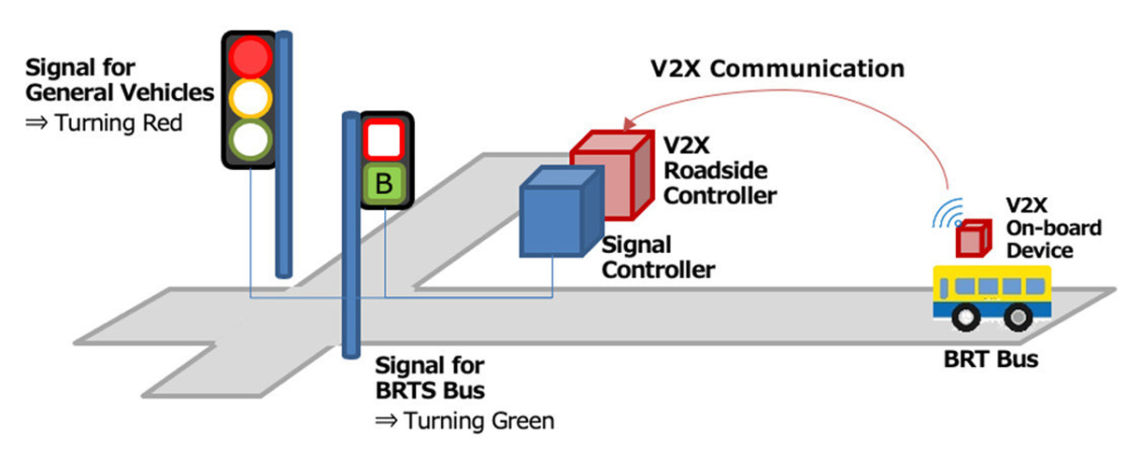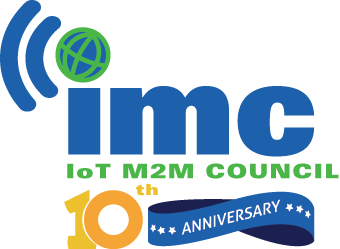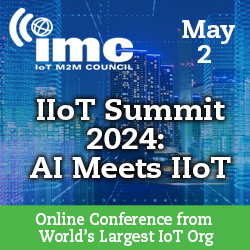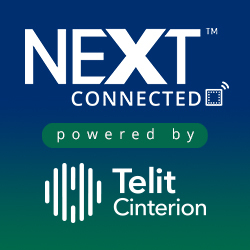V2X demo prioritises buses in Indian city
- March 14, 2022
- Steve Rogerson

A V2X system that prioritises public transport has been demonstrated in the city of Ahmedabad, India, by a consortium led by Japanese company Zero-Sum ITS.
Working with bus company Ahmedabad Janmarg, a special purpose vehicle from the Ahmedabad Municipal Corporation conducted the demonstration showcasing a public transportation vehicle priority system. The project was supported by the Ministry of Internal Affairs & Communications in Japan.
The system functions over the 600MHz band running on Japanese V2X communication technology.
This experiment demonstrated the use of a public transportation vehicle priority system in which a public transport vehicle such as a bus running on the BRTS bus rapid transport system corridor communicates with traffic signals at the intersections using V2X communications based on international standards. This allows the bus to have priority passage at intersections.
This is the first demonstration of its kind in India for a public vehicle on a public road.
The BRTS corridor in Ahmedabad has a route length of over 103km. It has a fleet of 378 buses that cover 178 stations, completing over 3656 trips daily.

The technology prompts traffic signals along the route to identify the approach of the buses, identify the speed and distance of the approaching bus, and map the traffic signal cycle to turn green by the time the bus reaches the intersection, thereby enabling the bus to get signal free passage and reduce the travel time to its destination.
The demonstration used the 600MHz band, as this allows for real-time communication that has high penetrability through buildings and natural obstructions and has less interference from other devices.
Several V2X communication devices that function on 600MHz band were installed on buses that run on the BRTS corridor and at a busy traffic intersection on the corridor in Ahmedabad. When a bus that is equipped with a V2X communication device approaches the traffic intersection at which a V2X communication device is installed, the devices identify each other from over 400m.
The V2X devices communicate with each other and the information that the bus is approaching the intersection along with parameters such as speed and position are immediately transmitted to the signalling system, enabling the system to modify and optimise the running signal cycle to turn green by the time the bus approaches within 100 to 150m of the intersection. This allows the priority passage of the bus over other modes of transportation.
Once the bus has passed, the system returns to a normal signal cycle.
The experiment was conducted at the Panjrapool traffic intersection on the BRTS corridor in Ahmedabad, which is the largest city in the western state of Gujarat.
The experiment showed a reduction of 86.2% from the average waiting time of 33.1s of the bus at the intersection without the system to 4.5s with the system. It also optimised the non BRTS lanes when there was no bus approaching.
The experiment helped demonstrate that the system does not have any adverse effect on non BRTS lanes or other vehicles on the road and, when implemented over a wider area, should help in reducing the waiting time for non BRTS lanes as well.
The 598 to 608MHz band used in the demonstration was acquired under an experimental licence from the Wireless Planning & Coordination (WPC) wing of the Department of Telecommunications in India.
“The initial results seen from the experiment seems very promising and we are proud to be associated with Zero-Sum to conduct such a trial for the first time in the country,” said Vishal Khanama, general manager of Ahmedabad Janmarg. “Ahmedabad Janmarg is looking for improving the on-time performance and time frequency of its buses so that we aim at creating customer delight and this is one such initiative that we believe can make the travel experience of the commuters better and refine the overall quality of life for the citizens of Ahmedabad. We are impressed that the system allows for both priority of BRTS buses and at the same time does not cause any interruption for general traffic. We will study the results in detail and review the feasibility of expanding the V2X system across a wider area of the BRTS corridor in Ahmedabad.”
Chikara Kikuchi, managing director of Zero-Sum ITS, added: “Last year, we had successfully demonstrated the effectiveness of the V2X system in creating automated green corridors for emergency vehicles. The results of the experiment conducted this year on the BRTS corridor in Ahmedabad also seem very encouraging. We will shortly look at creating a standardised solution that can be implemented by bus corporations across the country on their BRTS corridors and by municipalities for providing priority passage for their emergency vehicles.”





